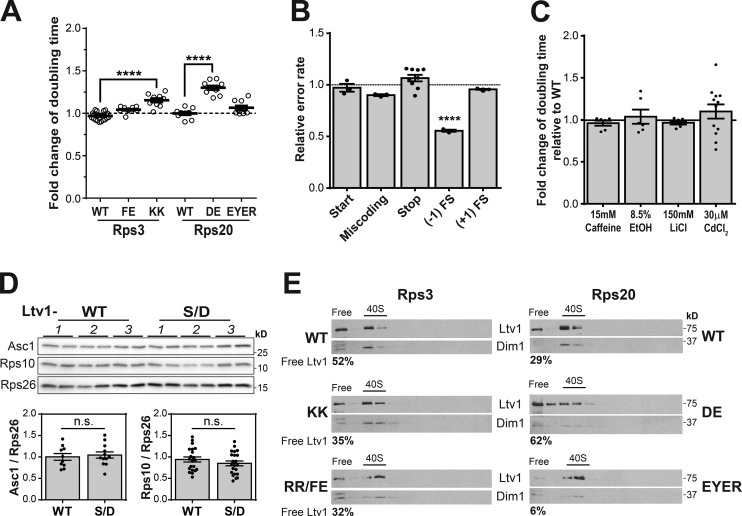Figure 5.
Ltv1 facilitates RP assembly. (A) Genetic interactions between Ltv1-S/D and mutations in the Rps3 protein network. Effect from Rps3 and Rps20 mutations in the Ltv1-S/D background was normalized to the effect in WT background n = 3–6 biological replicates with three to five technical repeats. (B) Translational fidelity in Ltv1-S/D cells (n = 3–9). (C) No stress resistance in Ltv1-S/D cells (n = 3–12). (D) Ribosomal protein occupancy in Ltv1-S/D cells. The data are averages from two technical repeats of three to five biological replicate experiments. In all cases, the error bars represent the SEM, and the significance was determined using an unpaired t test. ****, P < 0.0001. (E) Release of Ltv1 is promoted by the Rps3 interaction network. Sucrose-gradient and Western analysis of lysates from cells containing WT or mutant Rps3 (left) and Rps20 (right), respectively. The percentage of free Ltv1 (vs. ribosome-bound Ltv1) is given below each Western blot.

